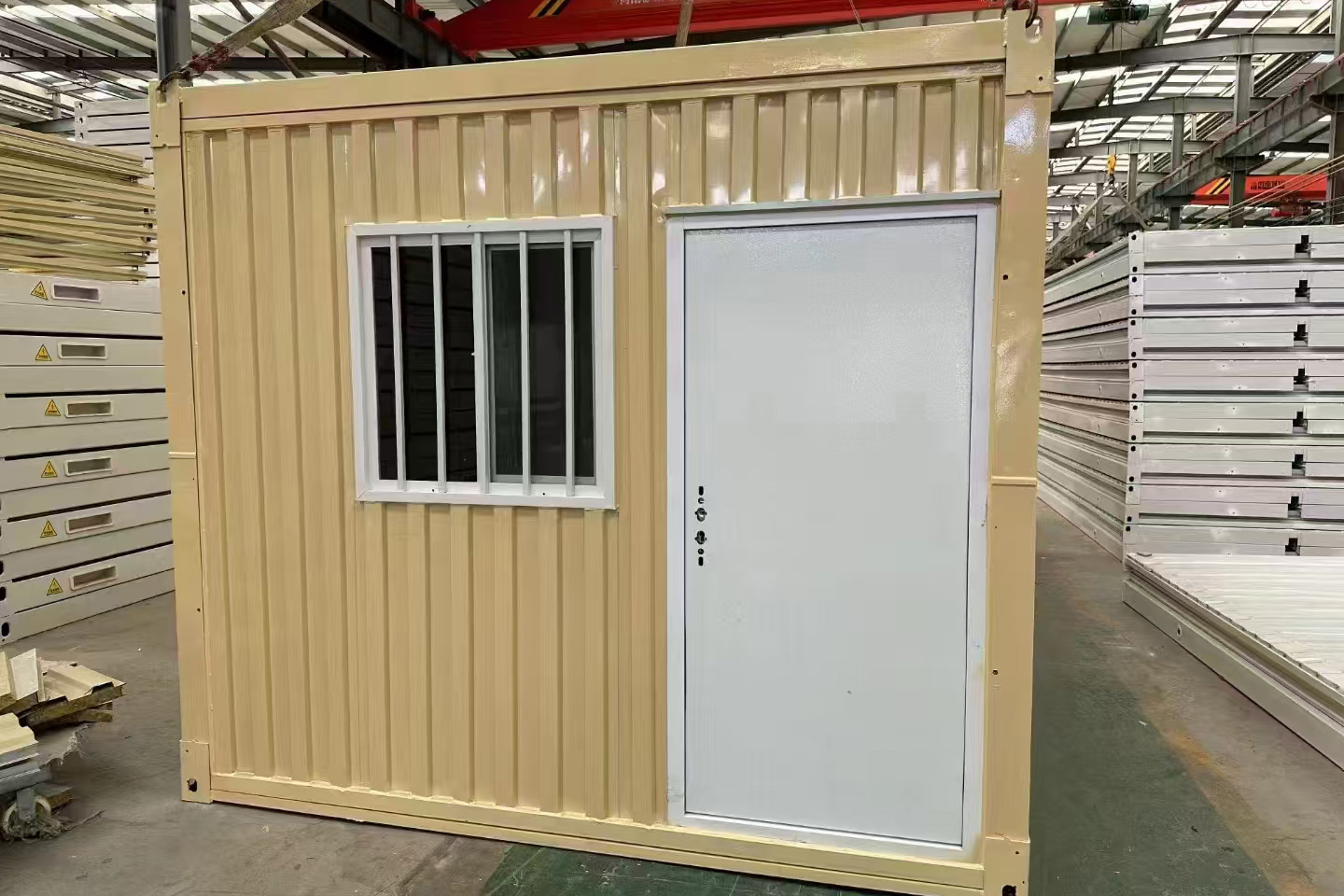Creating Open Spaces: The Benefits of Light Steel Frames in Modern Architecture
Jun 20,2025

Creating Open Spaces: The Benefits of Light Steel Frames in Modern Architecture
Introduction to Light Steel Frames
In the world of architecture and construction, **light steel frames** have emerged as a revolutionary choice for creating open and expansive spaces. Their versatility, durability, and lightweight nature not only facilitate innovative designs but also enhance the structural integrity of buildings. In this article, we will delve into the numerous benefits of light steel frames, explore their applications, and address common questions surrounding their use in modern architecture.
The Evolution of Construction Materials
Throughout history, the construction industry has witnessed significant advancements in materials used for building structures. From traditional wood and masonry to the adoption of innovative materials like **light steel**, each evolution has aimed to improve safety, sustainability, and design flexibility. Light steel frames represent the latest progression in this journey, offering architects and builders a robust solution for modern construction challenges.
Understanding Light Steel Frames
Light steel framing involves the use of thin-walled steel sections that are fabricated into structural components. These components can be pre-engineered and assembled on-site, allowing for faster construction times. The key characteristics of light steel frames include:
- **Durability**: Light steel frames resist corrosion, pests, and fire, ensuring longevity.
- **Flexibility**: These frames can be tailored to fit various architectural designs and purposes.
- **Cost-Effectiveness**: Although the initial investment may be higher than traditional materials, the long-term benefits often outweigh the costs.
The Advantages of Light Steel Frames
Understanding the benefits of light steel frames can help architects, builders, and homeowners make informed decisions about their construction projects. Below, we explore the primary advantages of using light steel frames.
1. Enhanced Structural Integrity
One of the most notable benefits of light steel frames is their exceptional structural integrity. Steel's inherent strength allows for larger spans and fewer load-bearing walls, which is essential for creating open spaces. This flexibility is particularly advantageous in:
- **Commercial buildings**: Retail spaces benefit from expansive floor plans that enhance customer experience.
- **Residential homes**: Homeowners can achieve open-concept designs that promote fluid living spaces.
Resilience Against Environmental Factors
Light steel frames are designed to withstand various environmental challenges such as high winds, earthquakes, and heavy snowfall. The resilience offered by light steel frames is crucial in regions prone to natural disasters, ensuring safety and stability.
2. Design Flexibility and Aesthetic Freedom
Light steel frames allow architects to push the boundaries of design and create visually stunning structures. With the capability to mold and shape steel into various configurations, architects can explore:
- **Unique architectural styles**: Modern designs can feature unconventional shapes and asymmetrical layouts.
- **Larger windows and open spaces**: The reduced number of load-bearing walls means that more natural light can flood interiors, creating a welcoming atmosphere.
Seamless Integration of Other Materials
Light steel frames can be easily integrated with other building materials, such as glass and wood, allowing for a harmonious blend of aesthetics and functionality. This versatility encourages innovative architectural solutions that appeal to diverse tastes.
3. Sustainable Building Practices
Sustainability is a pressing concern in modern construction, and light steel frames offer numerous eco-friendly benefits. Steel is 100% recyclable, which minimizes waste and reduces the demand for virgin materials. Additionally, the lightweight nature of light steel frames leads to:
- **Reduced transportation costs**: Lighter materials require less fuel for transportation.
- **Lower energy consumption**: Structures built with light steel frames often require less energy to heat and cool, contributing to lower utility bills and a reduced carbon footprint.
Compliance with Green Building Standards
Using light steel frames can help projects earn points towards green building certifications, such as LEED (Leadership in Energy and Environmental Design). This compliance enhances a project's marketability and aligns with the increasing demand for environmentally responsible construction.
4. Faster Construction Times
Time is a crucial factor in any construction project, and light steel frames can significantly expedite the building process. The prefab nature of light steel components allows for:
- **Quick assembly**: Builders can erect structures in a fraction of the time compared to traditional methods.
- **Reduced labor costs**: Shorter construction timelines lead to lower labor expenses, making projects more cost-effective.
Applications of Light Steel Frames
Light steel frames are versatile and suitable for a variety of applications across different sectors. Below, we explore some of the most common uses of light steel frames in construction.
Commercial Buildings
In commercial construction, light steel frames are often used for:
- **Retail spaces**: The open layouts allow for flexible merchandising options and customer flow.
- **Office buildings**: Large floor plates enhance collaboration and communication among employees while providing a modern aesthetic.
Residential Homes
Light steel frames are becoming increasingly popular in residential construction due to their numerous benefits, including:
- **Single-family homes**: Many homeowners are opting for light steel frames to achieve contemporary designs with large, open living areas.
- **Multi-family housing**: The structural integrity of light steel frames allows for taller buildings with multiple units.
Industrial and Institutional Structures
Light steel frames are also ideal for:
- **Warehouses and factories**: The ability to create large, unobstructed spaces is crucial for operational efficiency.
- **Schools and hospitals**: These institutions benefit from flexible designs that can adapt to changing needs over time.
Challenges and Considerations
While light steel frames offer numerous advantages, it is essential to consider potential challenges when choosing this construction method. Some of the key factors to keep in mind include:
1. Initial Cost
The initial investment for light steel framing can be higher than traditional building materials. However, it is important to consider long-term savings in maintenance and energy costs when evaluating the overall budget.
2. Thermal Conductivity
Steel is a highly conductive material, which can lead to heat loss in buildings. Proper insulation is crucial to ensure energy efficiency in structures built with light steel frames. Selecting the right insulation materials and techniques will help mitigate this issue.
3. Noise Transmission
Steel frames can transmit noise more effectively than other materials, which may lead to sound issues in certain applications. Implementing soundproofing measures can help address this concern and create a more comfortable living or working environment.
Frequently Asked Questions (FAQs)
1. What are light steel frames made of?
Light steel frames are primarily made of cold-formed steel sections that are fabricated into structural components for construction.
2. How do light steel frames compare to traditional materials?
Light steel frames offer higher structural integrity, design flexibility, and sustainability compared to traditional materials like wood or masonry.
3. Are light steel frames suitable for residential construction?
Yes, light steel frames are increasingly being used in residential construction due to their versatility and ability to create open spaces.
4. What are the maintenance requirements for light steel frames?
Light steel frames require minimal maintenance due to their durability and resistance to pests and corrosion. Regular inspections can help ensure longevity.
5. Can light steel frames be insulated?
Yes, light steel frames can be insulated using various techniques to improve energy efficiency and comfort within the building.
Conclusion
Light steel frames represent a significant advancement in modern architecture, offering unparalleled benefits for creating open spaces without compromising structural integrity. From enhanced design flexibility to sustainable building practices, the advantages of light steel frames make them an ideal choice for contemporary construction projects. As the industry continues to evolve, embracing innovative materials like light steel will be essential in meeting the demands of future architectural challenges. Whether for commercial, residential, or institutional applications, light steel frames are paving the way for a new era in construction, one that prioritizes both aesthetics and functionality.
Contact Us
E-mail :
183597530@qq.com
WhatsApp:
+86-13810577811
Address:
No. 4 Fengzhi Road, Binhe New District, Baotou Rare Earth High tech Zone, Inner Mongolia Autonomous Region









